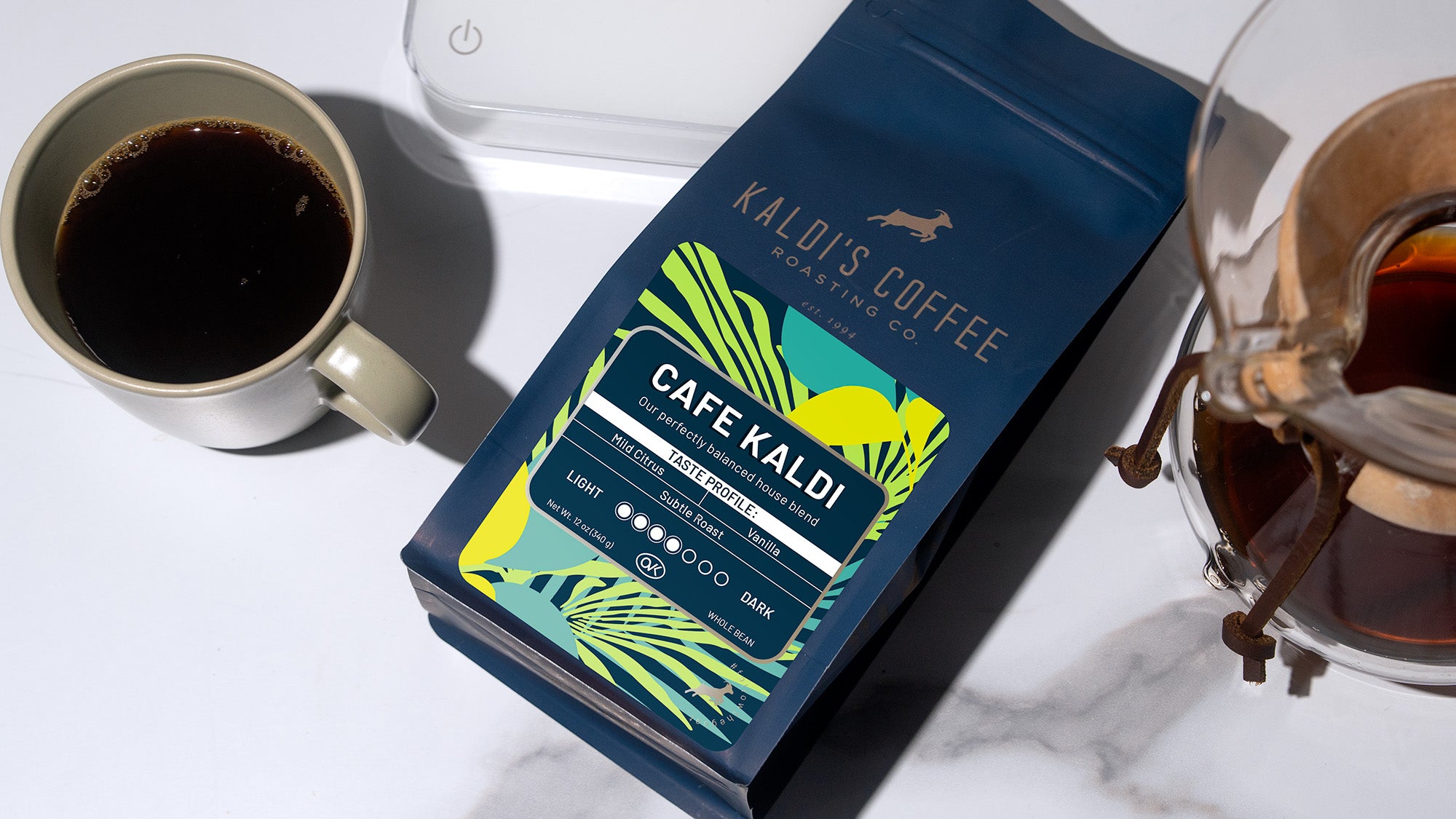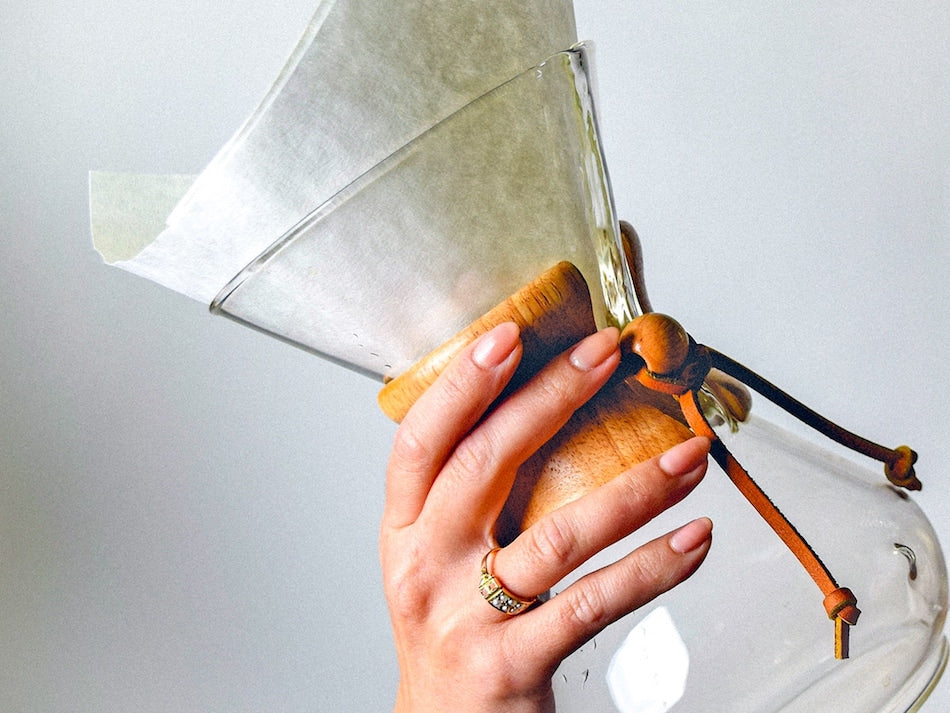Each season as the weather warms, a classic coffee debate appears before us: hot coffee or cold coffee? Both seem to have their ardent supporters, with plenty in each camp clinging to their chosen temperature year-round, no matter the reading on the thermometer.
We love all coffee choices and support whatever brew method you love most, but it did leave us with a question:
How does cold brewing taste versus hot brewing?
Not content to rely on our pre-baked general assumptions, we devised a relatively simple experiment:
- We chose 5 coffees: 1 medium roast blend, 1 dark roast blend, and 3 single origins from different growing regions
- We used our tried and true French Press Cold Brew method for cold brews
- We tasted the cold brew next to a standard, hot-brewed cupping bowl
Then we gathered our team, took copious notes, and got way too caffeinated as we sought to find a definitive answer.
Click here to skip to the conclusions!

|
OTHER WAYS TO TEST COLD VS HOT COFFEE
We chose the most one-to-one comparison we could muster for this, utilizing “full immersion” methods for each, via the traditional cupping bowl tasting method for our hot brew and the most traditional cold brewing method (long steep, ambient temperature water), which we accomplished in a French Press.
We could have varied either of these methods, and when you’re experimenting at home you might choose drip coffee and a flash chilled brew (like our Clever Dripper recipe), or a hot French Press and a Toddy cold brew for comparison.
The important thing is to use benchmarks you’re familiar with and comfortable brewing. At our Roastery, cupping is our standard hot brewing method for evaluation, so that’s what we used here. Let’s get to the taste test!

THE COFFEES:
The 5 coffees were chosen to give us the most thorough, rounded answer to our question. With these selections, we hope you find a match to your taste preferences, whether you love big fruit-forward naturals or the sultry, roasty notes of a very developed coffee.
Coffees tested:
- Haya Cold Brew Blend: Light citrus acidity, specifically formulated for cold brewing
- French Roast: One of our darkest roasts
- Peru Rutas del Inca: exceptional balance with raisin and green apple notes
- Papua New Guinea Baroida: tropical fruits and a caramel sweetness
- Ethiopia Ardi Natural: very fruit-forward natural coffee from one of coffee’s most famed regions

HOW COLD BREWING AFFECTED TASTE
Haya Blend:
Hot:
- Haya Cold Brew was conceived and created for cold brew, and it had been a while since most of us had tasted it as a hot brew. Happily, it presented well, with deep, chocolatey notes supplied by its Latin American beans and a bright, floral overtone from the Ethiopian Limu Gera that’s serving as the Ethiopian component at the time of writing.
Cold:
- The cold brew was almost exactly what we expected, and what we taste every day in our canned cold brew of Haya. The flavors blended perfectly into a creamy, cold hot-chocolate swirl with the light fruit of the Limu peeking through on the edges of our tongues.
The verdict: Hot brewing brought out more of the roasty notes from this medium-roasted coffee, but also gave the coffee more pronounced florals. Cold brewing gave us the creamy, chocolatey smoothness that we love.
French Roast:
Hot:
- Everything you’d expect of a French Roast, we tasted in our hot brew. Super-roasty nuttiness and bitter chocolates pervaded, hitting hard and fast like a dark roast.
Cold:
- Amazingly, the cold brew mellowed the coffee, turning roasty nuttiness into toasted cocoa nibs, bitter chocolate into semi-sweet chocolate, and rounding the body into a mellower, friendlier brew.
The verdict: If you love dark roasted coffee hot, you’ll probably love it as cold. If you normally shy away from darker roasted coffee, you might be surprised at how sweet and mellow it is as cold brew. If you ever find yourself with a bag, try it cold!

Peru Rutas del Inca:
Hot:
- As a hot brew, we got all the lovely tasting notes we expected from one of our favorite annual coffees. Chocolate covered raisin, green apple, and a balanced honey sweetness all tasted great.
Cold:
- Our cold brew magnified the apple acidity, which fought the sweetness, unbalancing the cup. We also tasted a note that’s common to many cold brews: oxidation. Oxidation often tastes slightly metallic and occurs in cold brewing, because while cold water oxidizes coffee at a much slower rate than hot water, the extended brew time does allow it to occur. This oxidation, on top of the unbalanced acidity, left us with an acidic, sharp, caramelly cold brew that we generally found less pleasing than delightfully balanced hot brew.
The verdict: Peru Rutas del Inca remains one of our favorite coffees, but cold brewing did not bring out the best of this particular coffee. This was a surprising result for everyone at the table!
Papua New Guinea Baroida:
Hot:
- Our tasting notes for this coffee brewed hot were mango, melon, and the light, pleasant bitters of caramel. PNG Baroida as a hot brew is rich and tropical.
Cold:
- Our cold brew magnified all these flavors, turning the volume up, while increasing the sweetness of the caramel note and bringing it to the fore. The cold brew stayed very balanced and had a mid-note of Honey Nut Cheerios, with a creamy, chocolatey finish that left us wanting more.
The verdict: We had a cold-brew skeptic at the table who confessed that this cold brew had shocked them with its overall quality! We saved this French Press in our fridge to drink later (i.e. it was delicious, and in stark contrast to the Peru, it brought out even more of the flavors we loved from the coffee.
Ethiopia Ardi Natural:
Hot:
- Our versatile Ardi, found in 3thiopia this year, is a standout coffee all by itself, and shone again here as a hot brew. Cotton candy sweetness with the familiar note of fermented red fruit, found in naturally processed coffees, brightened a light, mildly chocolatey cup.
Cold:
- The cold brew of Ardi displayed a touch of the oxidation taste mentioned under the Peru Rutas entry, but it disappeared quickly as citrus lingered across the palate. It was consistently one of the favorites of the table.
The verdict: Ethiopian coffees are pretty much just exceptional no matter how you brew them. We did taste a little more of the fermented nature of the coffee come through cold. If you want a very fruity cold coffee drink in the summer, find a natural Ethiopian!

CONCLUSION: HOW COLD BREW TASTES
Broadly speaking, we agreed on a few generalized characteristics when comparing the hot and cold versions of these coffees:
- The cold brews presented oxidation notes, but this was mostly covered and outweighed by dripping flavors of dark chocolates.
- The cold brews also consistently mellowed out each coffee’s roast notes, most notably in the French Roast.
- The mouthfeel of cold brews was consistently a thicker, creamier body that coated the palate.
While those conclusions were consistently true across all the coffees we tested, it’s also interesting to consider the exceptions:
- We were pleased (but not shocked) by how well our Haya Cold Brew tasted as a hot brew.
- Papua New Guinea Baroida stunned us with its ability to magnify its flavors consistently as a cold brew (something no other coffee did).
- We found ourselves disappointed by the Peru’s loss of balance when brewed cold.
Obviously, single-origin coffees come in and out of season, so these specific results won’t be useful year-round, but we encourage experimentation and exploration for anyone interested in tasting something outside of the everyday.
Any hot and cold brew method could be used in setting up a comparison like the one we did. An easy place to start is brewing a cold French Press, decanting the brew, cleaning the press, then brewing a hot French Press and comparing them side by side as the hot press cools.
WATCH OUR VIDEO FOR HOW TO MAKE FRENCH PRESS COFFEE
LESSONS FOR THE FUTURE
Coffee brings us back again and again to our core values of fun and continual improvement. In our cupping room, we had the coffee “purist” who discovered a cold brew he unexpectedly loved, saw some of our preconceptions fail completely, and enjoyed the experience of discovery as we tasted familiar and new coffees in an unfamiliar way.
Who knows, you may discover a gem of a cold brew like we did with the PNG or find that your favorite coffee is delicious in a new way like we did with the Ethiopia Ardi. Maybe you’ll be inspired to branch out from blends to single origin coffee for the first time, or to enjoy the pleasure of a chocolatey cold brew that’s heavier bodied than your normal hot brew, or find that you prefer the precise, clean flavors of a hot brew after years of being a cold brew fanatic.
|
Whatever you do with this new knowledge, we hope you keep challenging your palate to expand beyond familiar comforts and enjoy the journey of discovery, no matter where it leads you!
-
READ NEXT:
5 TIPS FOR BETTER COLD BREW COFFEE AT HOME
Related content:
- 5 Things You Should Know About Cold Brew | Kaldi's Coffee Blog
- Iced Clever Dripper Recipe | Kaldi's Coffee Blog
- How to Make Cold Brew with a French Press | Kaldi's Coffee Blog







